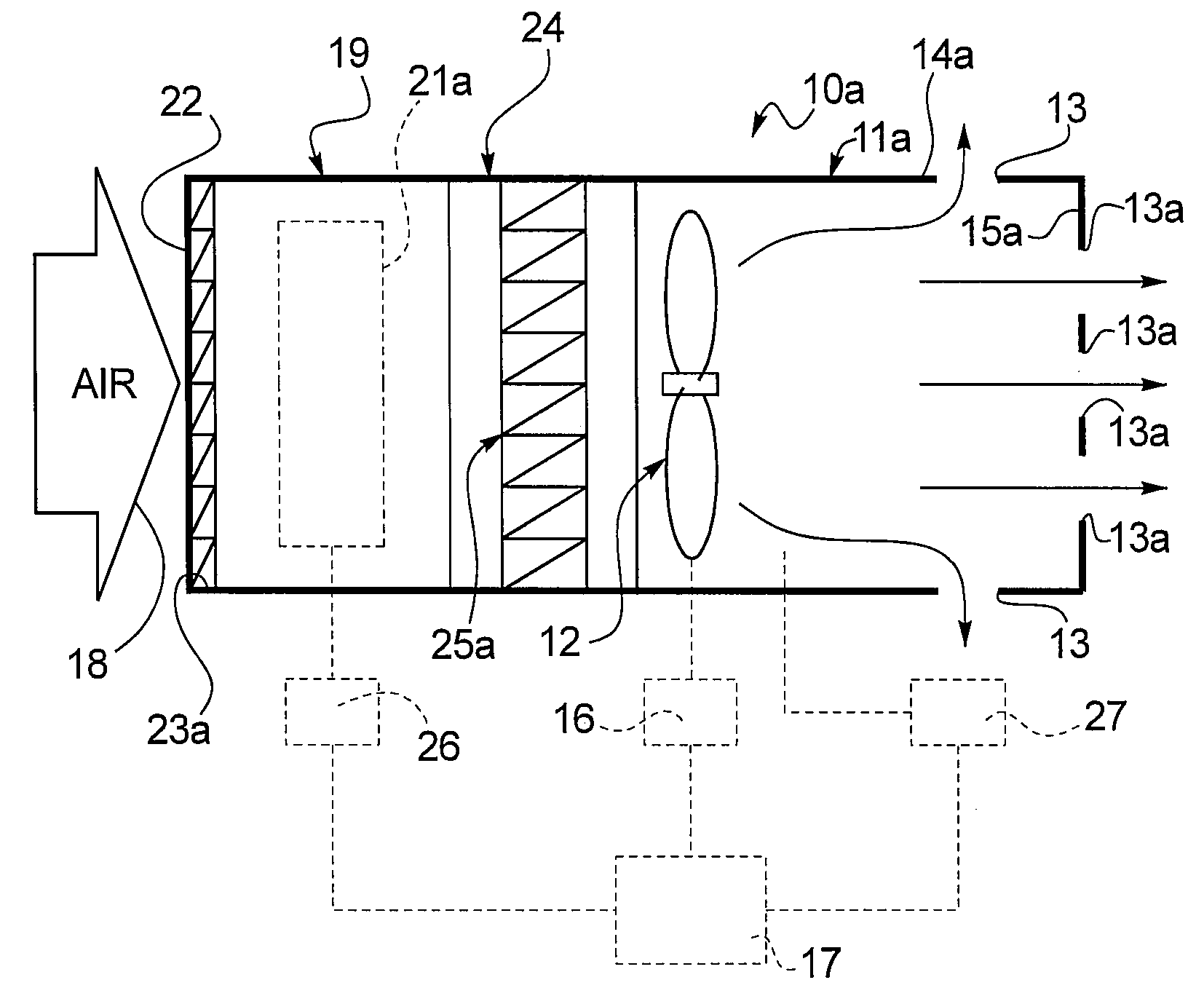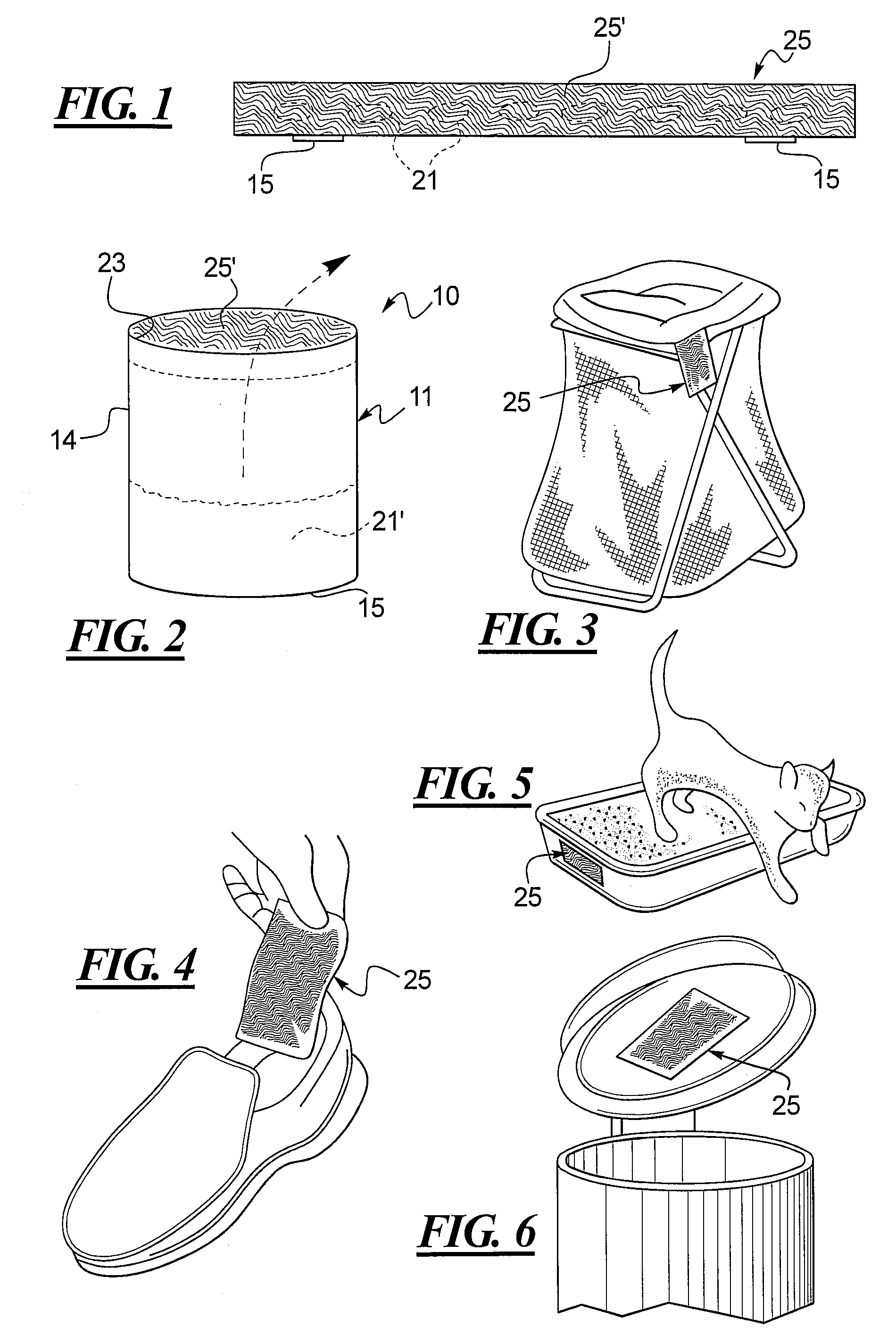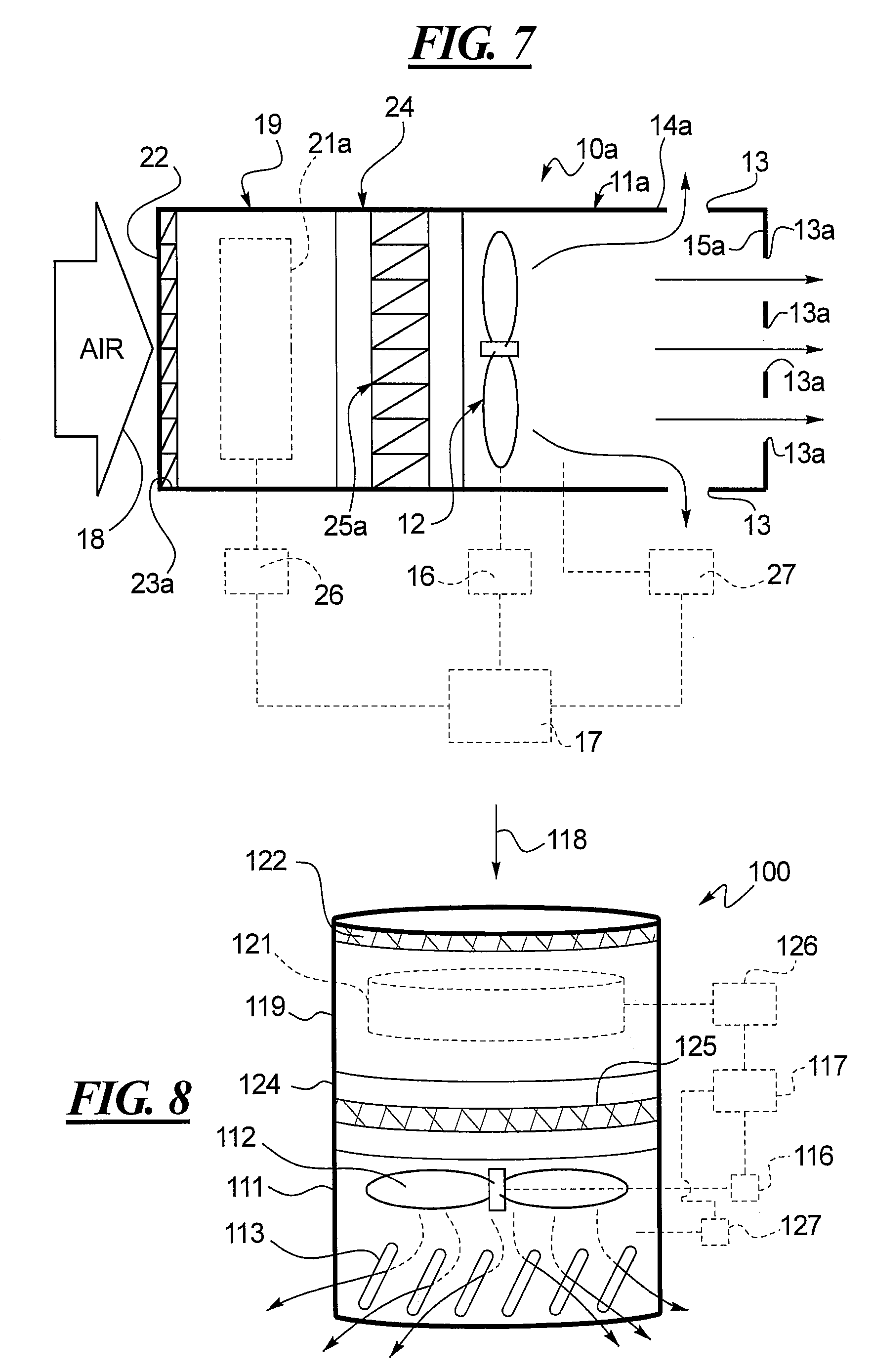Reduction of airborne malodors using hydrogen peroxide and a catalyst-coated media
a technology of hydrogen peroxide and catalyst coating, which is applied in the field of odor reduction or elimination, can solve the problems of not actually eliminating the malodorous substances themselves from the indoor environment, the approach to indoor malodor abatement is economically impractical, and many indoor spaces such as high-rise apartments and high-rise offices do not have direct access to fresh outdoor air. , to achieve the effect of convenient us
- Summary
- Abstract
- Description
- Claims
- Application Information
AI Technical Summary
Benefits of technology
Problems solved by technology
Method used
Image
Examples
examples 1-3
Preparation of Non-Woven Media Coated with Transition Metal Compound
[0095]Polyester fiber non-woven filter were cut using a circular die 4 inches in diameter. The non-woven filter (1.4 grams, weight accurately known, 4 inch diameter, 0.25 inch depth) were mounted vertically 5 inches in front of a pump sprayer containing a 1 weight % solution of Tyzor® TPT in isopropyl alcohol (Tyzor® TPT=99+% Ti(iso-propoxide)4, E.I. du Pont de Nemours and Company, Wilmington, Del., USA). Six grams of the 1% Tyzor® solution was sprayed evenly onto both sides of the filter material. The filter material was allowed to air dry at 22° C. and approximately 60% relative humidity for at least 24 hours prior to use, thereby converting the Ti(iso-propoxide)4 to hydrous titanium dioxide (DuPont Tyzor® Organic Titanates General Brochure). The filter material had a weight gain of approximately 20 mg, attributable to the hydrated titanium dioxide. The non-woven material had a noticeable white film deposited on t...
examples 4 and 5
Removal of Pentane Thiol Vapors in the Presence of Media Coated with Transition Metal Compound and Vapor Phase Hydrogen Peroxide, Using Flow Through Device
[0098]Example 4: A 25 ft3 sealed acrylic chamber was set-up to contain a mixing fan, hot plate, and flow through device having 2 filters and a vapor phase hydrogen peroxide source (a cylindrical filter paper dosed with 30 μl of a 50% aqueous hydrogen peroxide solution). The chamber atmosphere is interfaced with a gas chromatography apparatus (“Z-nose” 4100 Vapor Analysis System, Electronic Sensor Technology, Newbury Park, Calif., USA). The flow through device was set-up containing a blank (non-coated) non-woven filter, a cylindrical filter paper dosed with 30 μl of a 50% aqueous hydrogen peroxide solution, and the transition metal coated non-woven filter (prepared in example 1). Ten μl of an 8 wt % pentanethiol solution in methanol was added to the hot plate as the malodor. The malodor was volatilized by heating the hot plate for ...
example 6
Removal of Pentanethiol Vapors in the Presence of a Thin Non-Woven Media Coated with a Transition Metal Compound and Vapor Phase Hydrogen Peroxide, a Static Device
[0100]Example 6: A 2.3 ft3 acrylic chamber was set-up for experiments with the chamber atmosphere interfaced with a gas chromatography apparatus (“Z-nose”), similar to example 4. Within the acrylic chamber, a small weighing dish was position across the chamber from the Z-nose to hold the malodor solution and a low volume interior chamber was constructed to isolate the non-woven media from the chamber. 10 μl of a 0.8 wt % pentanethiol solution in methanol was added to the weighing dish as the malodor. The malodor was allowed to stabilize in the chamber for 10 minutes before sampling began. Analytical Z-nose data was recorded every 2.5 minutes throughout the course of the experiment. The experiment had three time regimes: 10 minutes of a static chamber for the malodor to evaporate and mix, followed by 60 minutes of recording...
PUM
| Property | Measurement | Unit |
|---|---|---|
| wavelength | aaaaa | aaaaa |
| freezing point | aaaaa | aaaaa |
| vapor pressure | aaaaa | aaaaa |
Abstract
Description
Claims
Application Information
 Login to View More
Login to View More - R&D
- Intellectual Property
- Life Sciences
- Materials
- Tech Scout
- Unparalleled Data Quality
- Higher Quality Content
- 60% Fewer Hallucinations
Browse by: Latest US Patents, China's latest patents, Technical Efficacy Thesaurus, Application Domain, Technology Topic, Popular Technical Reports.
© 2025 PatSnap. All rights reserved.Legal|Privacy policy|Modern Slavery Act Transparency Statement|Sitemap|About US| Contact US: help@patsnap.com



